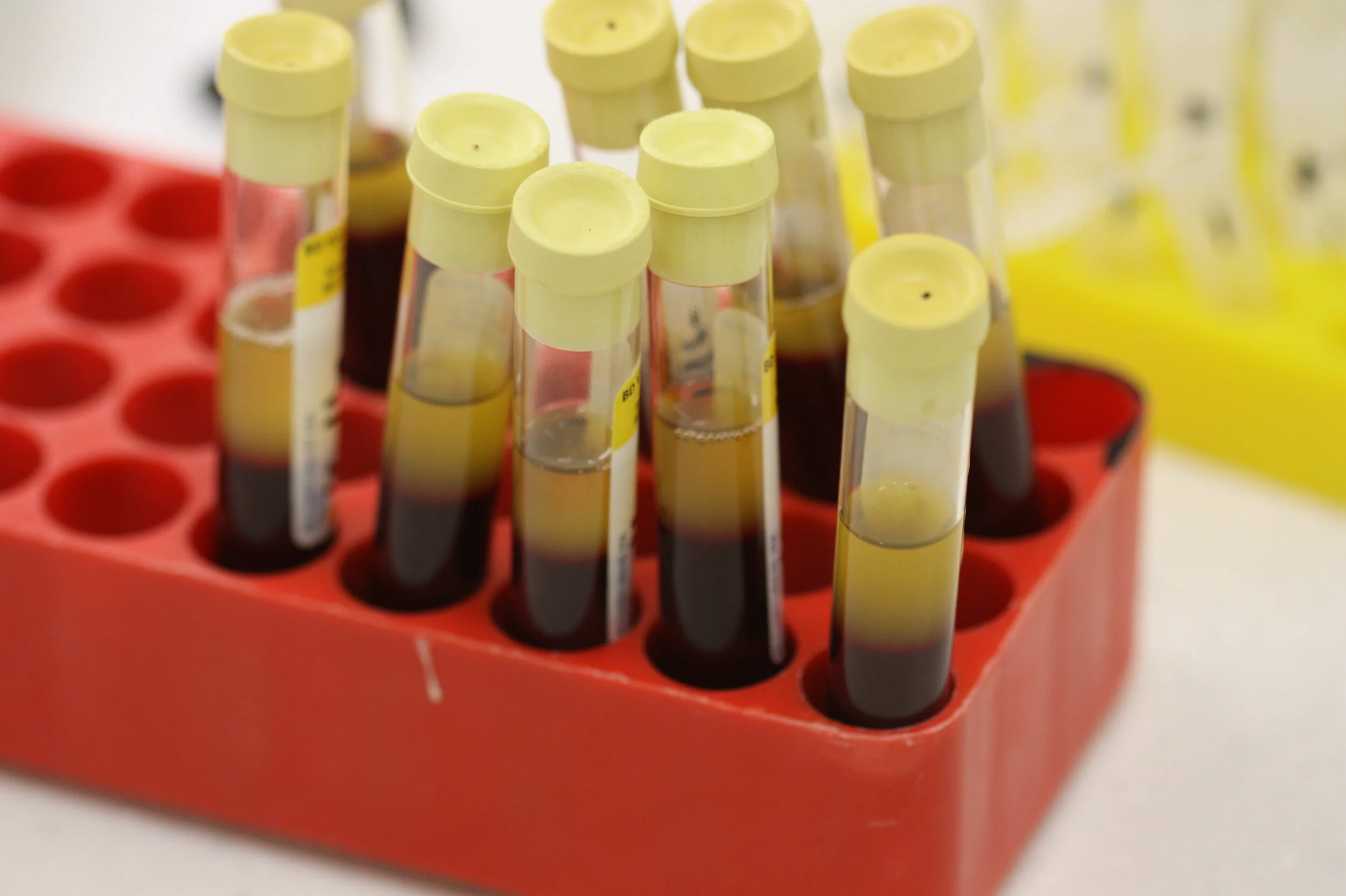Platelet Rich Plasma (PRP) for the Treatment of Tendinopathy and Osteoarthritis
Platelet-rich plasma (PRP) is a volume of plasma with a supra-physiological (higher than usual) concentration or number of platelets in it. It is typically produced by centrifugation of a patient’s blood on the day of the procedure. It is used in sports medicine in the treatment of tendinopathy and osteoarthritis.
PRP can only be used in the clinic setting by registered medical and dental practitioners.
There are broadly speaking two types of PRP, leukocyte-rich platelet-rich plasma (LR-PRP) and leukocyte-poor platelet-rich plasma (LP-PRP). LR-PRP has a supra-physiological or increased concentration of white blood cells (WBC). LP-PRP has an infra-physiological or normal or reduced concentration of WBC.
Tendinopathy can affect the plantar fascia (plantar fasciitis) or tendons such as, but not limited to, the common extensor origin (tennis elbow) or common flexor origin (golfer's elbow) of the elbow, patellar tendon (jumper's knee), rotator cuff of the shoulder, gluteal tendons of the hip, or Achilles tendon. Moderate-grade/grade 3 tendinopathy is tendon degeneration associated with intra-substance tears visualised on ultrasound (US) or MRI scanning. PRP is a second-line treatment, as an adjunct to a rehabilitation program, when rehabilitation, in the form of a well-structured and progressive eccentric strengthening program, has failed in the management of moderate-grade/grade 3 tendinopathy. High-dose LR-PRP is the most effective PRP when treating tendinopathy. It can be produced using the Zimmer Biomet Recover system and is injected intratendinously into the tear within the tendon, necessitating ultrasound guidance. Multiple injections of PRP are not necessary. A single injection of LR-PRP is usually sufficient. Patients can expect a significant flare post-injection lasting 48 hours, followed by an ache lasting two weeks. Patients then need to resume their rehabilitation program after the post-injection flare in pain has settled to less than 3/10 severity. The healing response induced by the PRP injection will take 12 weeks to take effect, with stimulation of collagen production and healing of the intra-substance tear. Moderate-grade/grade 2 tendinopathy is tendon degeneration with the absence of an intra-substance tear on ultrasound or MRI scanning. Instead of PRP, Focused extra-corporeal shockwave therapy (F-ESWT) is indicated as a second-line treatment for the treatment of low-grade tendinopathy, as an adjunct to a rehabilitation program, when the rehabilitation program has failed.
Zimmer Biomet Recover system used to produce HD LR-PRP
Elbow common extensor origin tendon tear (tennis elbow) pre-injection
Healed elbow common extensor origin tendon tear (tennis elbow) post-injection
In the treatment of Kellgren-Lawrence Grade I-III (mild-moderate) osteoarthritis, PRP can be used to improve pain and function. High-dose LP-PRP, with a platelet dose of 10 billion platelets, is most effective, requires 60-120 mL of blood to be produced, and can be produced using the EmCyte PureTWO system. A single injection can improve pain and function by approximately 50% at six months post-injection. These improvements, albeit diminishing, can be experienced up to 12+ months post-injection. Occasionally, a second injection 3-4 weeks after the first injection may be required. LP-PRP is chondro-protective (stops cartilage ‘wear’). However, it is not chondro-regenerative (causes cartilage regrowth). Post-injection patients can expect a flare in their pain lasting 48 hours. It typically takes four weeks for the PRP to have an effect.
Emcyte PureTWO system used to produce HD LP-PRP
At SportsMed Sunshine Coast, both types of PRP can be safely produced in our purpose-built laboratory under sterile conditions using a type-II biological safety cabinet. We also have the facilities to perform PRP injections under ultrasound guidance, both intra-articularly, into the joint, and intra-tendinously, into the tendon, to ensure correct placement.
Type-II Biological Safety Cabinet Clean Workspace used to produce Platelet-Rich Plasma (PRP)
GE Logiq Fortis Console Ultrasound used at SportsMed Sunshine Coast for ultrasound-guided injections to ensure accurate placement of PRP into joints and tendons
PRP injections do not attract Medicare rebates and as such patients are out of pocket the full cost of the procedure.







